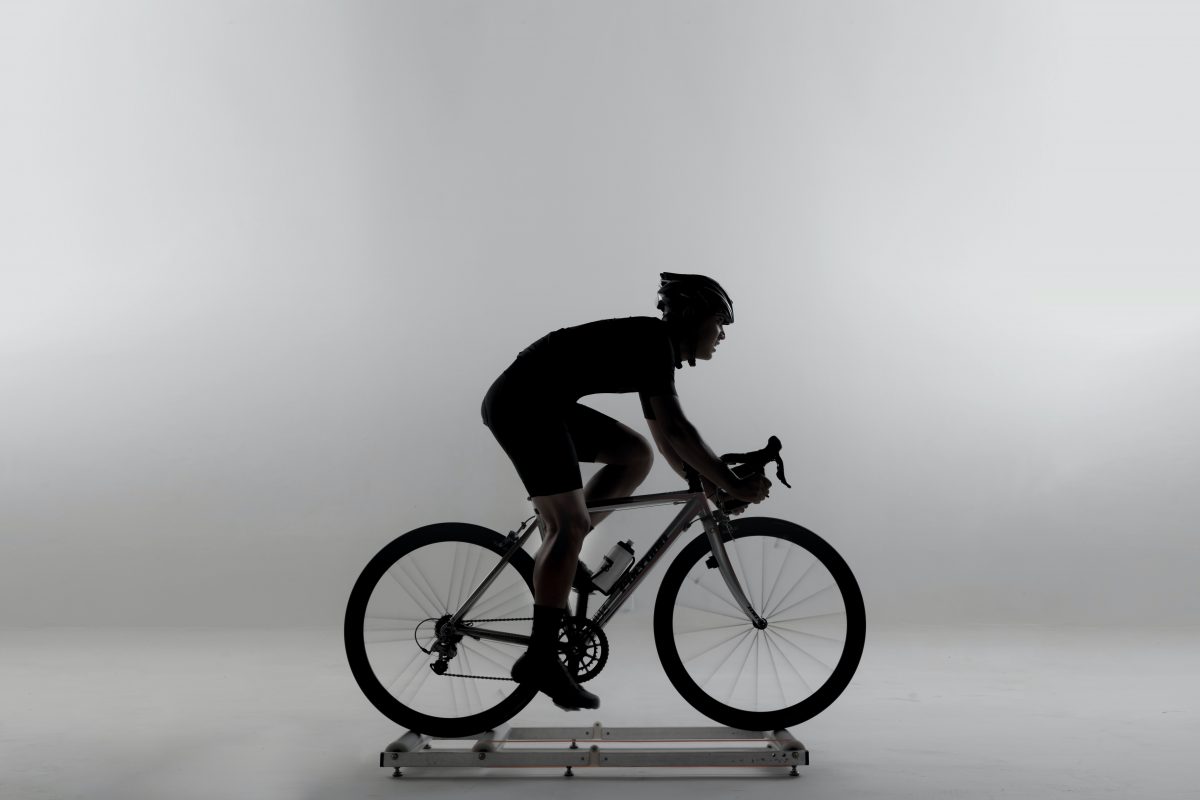A fast cadence training promises an improvement of your pedaling rotation and an optimized interaction of the different muscle groups.
What is a fast cadence training in cycling?
A really good cadence workout is best done on the roller. This allows you to control the resistance precisely and you don’t run the risk of being too strict. In competition and outdoor training, you tend to ride lower cadences in normal athletic training – around 75-95 turns/minute on the surface and 40-70 turns on the mountain, the steeper the lower. So why a special cadence training at all?
High cadences are expected to improve the pedaling cycle and an optimized interaction of the different muscle groups. With high cadences during indoor training you can set a new and for many people unusual training stimulus. But a high cadence needs to be learned and requires a training build-up over several weeks. The best way to start is to increase the cadence every minute. For example, start with one minute and 60 revolutions, then one minute with 70 revolutions and so on up to 120 revolutions per minute. Experienced riders can make it to 140 revolutions. It is important to ride everything in a moderate range, i.e. to keep the wattage as well as the resistance low. Therefore, such increases can be repeated as often as desired. Take care to keep your upper body steady even at high cadence and not to bob. You will notice: The more often you practice high cadence numbers, the better it will work out and the higher cadences you can ride “cleanly”. If you can easily manage 130 revolutions for one minute, it is time to extend the duration a little and, for example, ride once for 5 minutes with 120 revolutions alternating with 3 minutes of easy riding and 60 revolutions. Or you can build intervals into the workouts. E.g. 2 minutes with 120 revolutions and 90% intensity alternating with 4 minutes loose.
And when it gets sunny and warm again, a cadence workout outside could look like this: Put the chain on the small disc at the front and on the fourth smallest sprocket at the back, so that you can cadence moderately with 75-90 revolutions on the surface. Now choose a slightly hilly course and ride through the entire training course without shifting gears at a moderate intensity. Uphill the cadence automatically collapses and downhill you have to crank very fast to keep the pressure on the pedal. In this way, you use the entire cadence range that you have practiced in roller training.
This Bolg Article was made available to us by Fit for Life. Fit for Life is the Swiss magazine for fitness, running and endurance sports. Would you like to read such articles regularly? Then Click here.

